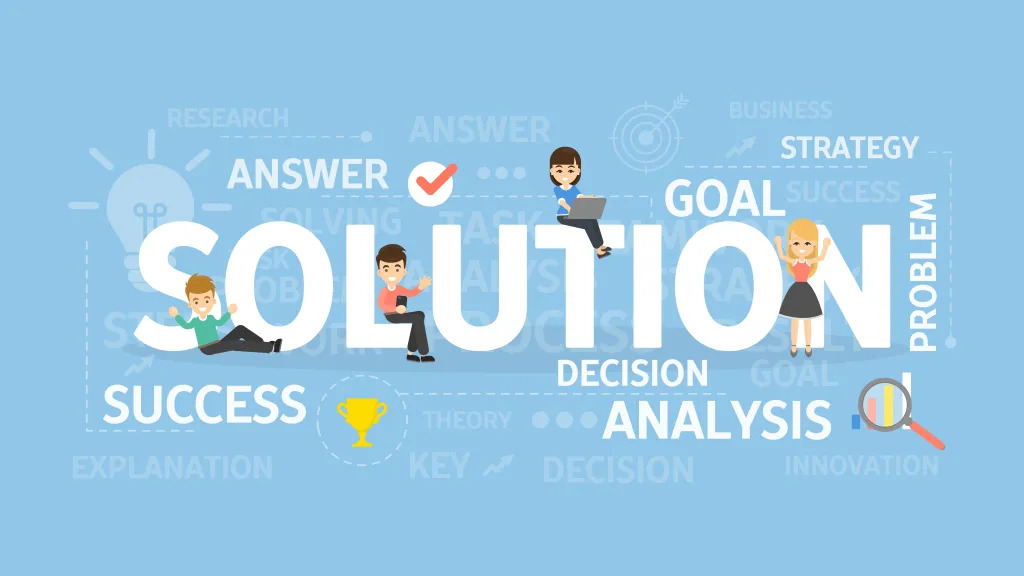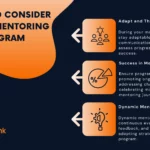
Common Challenges with Mentoring Software
Lack of engagement from mentors and mentees ⏰
Lack of engagement from mentors and mentees is a common challenge that organizations face when using mentoring software. Here are some possible reasons for this challenge:
- Lack of buy-in
- Poor matching
- Lack of communication
- Technical issues
- Lack of accountability
In summary, by taking a proactive approach to addressing these challenges, organizations can improve engagement levels.
Difficulty in matching mentors and mentees ☯
Difficulty in matching mentors and mentees is a common challenge that organizations face when using mentoring software. Here are some possible reasons for this challenge:
- Lack of data
- Limited pool of mentors
- Limited pool of mentees
- Inadequate matching algorithm
- Lack of flexibility
In short, by taking a proactive approach to addressing these challenges, organizations can improve the quality of matches.
Limited access to mentors and mentees ♾️
Limited access to mentors and mentees is a common challenge that organizations face when using mentoring software. Here are some possible reasons for this challenge:
- Lack of diversity
- Geographic limitations
- Time constraints
- Lack of visibility
- Lack of motivation
Hence, by taking a proactive approach to addressing these challenges, organizations can improve access to mentors and mentees. Also this can help to ensure that their mentoring program is successful.
Technical issues with the software 👩🏻💻
Technical issues with mentoring software can be frustrating and can hinder the success of a mentoring program. Here are some possible technical issues that organizations may encounter when using mentoring software:
- Software glitches
- Compatibility issues
- Security concerns
- User error
- Integration issues
To clarify, by taking a proactive approach to addressing these challenges, organizations can ensure that their mentoring program is successful. Also this can help that users have a positive experience with the mentoring software.
Lack of customization options 🗍
Lack of customization options is another common challenge that organizations face when using mentoring software. Here are some possible reasons for this challenge:
- Limited features
- Inflexible templates
- Limited branding options
- Lack of integration options
- Limited support options
To explain, by choosing a mentoring software that offers a wide range of features, customization options, and support, organizations can ensure that their mentoring program is tailored to their specific needs and objectives.
Solutions to Overcome Challenges
Encouraging mentor and mentee engagement through incentives and rewards 😄
Encouraging mentor and mentee engagement is critical to the success of any mentoring program. Here are some possible incentives and rewards that organizations can offer to encourage engagement in their mentoring program:
- Recognition: Organizations can recognize the contributions of mentors and mentees by highlighting their achievements in company newsletters, social media posts, or during company-wide meetings. This recognition can encourage other employees to participate in the mentoring program and increase engagement.
- Professional development opportunities: Organizations can offer professional development opportunities, such as attending conferences or workshops, to mentors and mentees who actively participate in the mentoring program. These opportunities can help mentors and mentees build their skills and knowledge, which can be valuable for their career development.
- Performance bonuses: Organizations can offer performance bonuses or other financial incentives to mentors and mentees who achieve specific goals or milestones in the mentoring program. These incentives can motivate mentors and mentees to actively engage in the program and achieve their goals.
- Public speaking opportunities: Organizations can offer public speaking opportunities to mentors and mentees who have achieved significant success in the mentoring program. This can give mentors and mentees visibility within the organization. Also this can help them build their reputation as experts in their field.
- Mentoring excellence awards: Organizations can create mentoring excellence awards to recognize mentors and mentees who have made outstanding contributions to the mentoring program. These awards can be given out annually or at the end of the mentoring program to highlight the achievements of mentors and mentees.
Therefore, by recognizing the contributions of mentors and mentees, offering professional development opportunities, providing financial incentives, offering public speaking opportunities, and creating mentoring excellence awards, organizations can motivate mentors and mentees to actively participate in the program and achieve their goals.
Using data-driven algorithms for matching mentors and mentees 🤩
Data-driven algorithms can be a powerful tool to match mentors and mentees in a mentoring program. Here are some ways that data-driven algorithms can be used to improve the mentor-mentee matching process:
- Identifying compatible personalities: Data-driven algorithms can analyze the personality traits of mentors and mentees. Also this can identify those who have compatible traits. This can lead to more effective mentoring relationships, as mentors and mentees who share similar personality traits may be more likely to work well together.
- Analyzing skills and experience: Data-driven algorithms can analyze the skills and experience of mentors and mentees. Also this can match them based on their areas of expertise. This can ensure that mentees are paired with mentors who have the knowledge and experience to help them achieve their goals.
- Considering organizational needs: Data-driven algorithms can also consider the organizational needs when matching mentors and mentees. For example, if an organization is looking to develop its leadership pipeline, the algorithm can identify mentors who have experience in leadership development. Also this can match them with mentees who have the potential to become future leaders.
- Taking into account demographics: Data-driven algorithms can take into account demographic factors such as age, gender, and cultural background when matching mentors and mentees. This can help ensure that mentors and mentees are paired with someone who can understand their unique experiences and perspectives.
- Using feedback for continuous improvement: Data-driven algorithms can use feedback from mentors and mentees to continuously improve the matching process.
Thus, by using data-driven algorithms, organizations can ensure that mentors and mentees are matched effectively and are more likely to have successful mentoring relationships.
Providing multiple channels for mentor-mentee communication 🧐
Here are some channels that organizations can consider providing for mentor-mentee communication:
- Video conferencing: Video conferencing allows mentors and mentees to have face-to-face conversations, regardless of their location. This can be an effective way to build a strong relationship and improve communication between mentors and mentees.
- Chat applications: Chat applications allow mentors and mentees to communicate in real-time. This can be useful for quick questions or updates. Also this can help to build a more informal and relaxed relationship between mentors and mentees.
- Email: Email is a common communication channel for mentoring. It provides a formal and structured way for mentors and mentees to communicate. Also can be useful for sharing longer messages or documents.
- Phone calls: Phone calls provide a more personal touch than email or chat. Also can be useful for mentors and mentees who prefer verbal communication.
- In-person meetings: In-person meetings are not always possible, especially for remote or distributed teams. However, if possible, they can be an effective way to build a strong relationship between mentors and mentees.
In summary, By providing multiple channels for mentor-mentee communication, organizations can offer more options for mentor-mentee communication. This can help to improve engagement and make mentoring more accessible to employees. This can result in a more effective mentoring program and help employees to develop new skills. Also this can help achieve their career goals.
Regular software updates and maintenance to address technical issues 😎
Here are some benefits of regular software updates and maintenance:
- Improved performance
- Enhanced security
- Compatibility with new technology
- New features and functionality
In short, To ensure that regular updates and maintenance are performed, organizations should have a maintenance schedule in place. This schedule should include regular software updates, bug fixes, security patches, and other maintenance tasks. By following a maintenance schedule, organizations can ensure that their mentoring software is functioning correctly. Also employees have access to a reliable and effective tool for their mentoring needs.
Offering customization options to meet specific organization needs 🥳
Here are some customization options that organizations can consider offering to meet their specific needs:
- Customizable mentoring goals: Organizations may have specific mentoring goals that they want to achieve, such as improving employee retention, increasing diversity and inclusion, or developing specific skills. Customizable mentoring goals can help organizations to align their mentoring program with their overall business objectives and focus on achieving specific outcomes.
- Customizable matching criteria: Organizations may have specific criteria that they use to match mentors and mentees, such as location, department, experience level, or job function. Customizable matching criteria can help to ensure that mentors and mentees are well-matched and can create meaningful mentoring relationships.
- Customizable communication channels: Organizations may have specific communication channels that they want to use for mentoring, such as video conferencing, chat applications, or email. Customizable communication channels can help to ensure that mentors and mentees can communicate in the way that works best for them and their organization.
- Customizable reporting and analytics: Organizations may have specific reporting and analytics needs, such as tracking the progress of mentoring relationships, measuring the impact of mentoring on employee development, or assessing the overall effectiveness of the mentoring program. Customizable reporting and analytics can help organizations to gain valuable insights into their mentoring program. Also this can help to make data-driven decisions to improve the program.
Hence, offering customization options to meet specific organization needs is an important solution to overcome the challenge of lack of customization options in mentoring software. Customization enables organizations to tailor the program to their unique culture, goals, and needs. Henceforth can help to ensure a successful and effective mentoring program.
Best Practices for Successful Mentoring Software Implementation
Establishing clear goals and objectives for the mentoring program 🎯
Here are some steps to establishing clear goals and objectives for a mentoring program:
- Identify the organization’s goals: This could include improving employee retention rates, increasing employee productivity, developing future leaders, or improving diversity and inclusion.
- Determine how mentoring can support the organization’s goals: For example, if the goal is to develop future leaders, mentoring can be used to provide guidance and support to employees who have the potential to become future leaders.
- Define specific objectives: Objectives should be specific, measurable, achievable, relevant, and time-bound (SMART). For example, if the goal is to improve employee retention rates, the objective could be to increase employee retention rates by 10% within the next year through the implementation of a mentoring program.
- Communicate goals and objectives: Once goals and objectives are defined, it is important to communicate them to all stakeholders involved in the mentoring program, including mentors, mentees, and program administrators. This ensures that everyone involved in the program understands the purpose of the program and what is expected of them.
- Monitor progress towards goals and objectives: Regular tracking and reporting on program outcomes will help identify areas for improvement. Also this will help to enable organizations to make necessary adjustments to the program.
To clarify, establishing clear goals and objectives for the mentoring program is crucial to ensure the program’s success. By identifying the organization’s goals, determining how mentoring can support those goals, defining specific objectives, communicating goals and objectives, and monitoring progress towards achieving them, organizations can create an effective mentoring program that aligns with their unique needs and goals.
Encouraging participation from all levels of the organization 🤗
Encouraging participation from all levels of the organization is a key solution to ensure the success of a mentoring program. Here are some strategies to encourage participation from all levels of the organization:
- Communicate the benefits: To encourage participation from all levels of the organization, it is important to communicate the benefits of the mentoring program. This includes explaining how the program can help participants achieve their professional goals, enhance their skills, and provide opportunities for personal and professional growth.
- Encourage top-level support: When senior leaders and executives support the mentoring program, it sends a message that the program is important. Also this encourages participation from all levels of the organization. Senior leaders can lead by example and serve as mentors or sponsors themselves, which can help to build trust and engagement in the program.
- Provide training and support: This could include training on effective mentoring practices, communication skills, and goal-setting. Providing resources such as mentoring guides, templates, and checklists can also help participants feel more confident in their roles.
- Create a mentorship culture: This can be done by recognizing and celebrating successful mentoring relationships, providing opportunities for mentors and mentees to share their experiences and learn from one another, and embedding mentoring into the organizational culture.
- Make the program inclusive: This includes ensuring that the program is accessible to all employees, regardless of their role or level in the organization. Providing opportunities for cross-functional mentoring can also help to break down silos. Also this can encourage participation from all levels of the organization.
To explain, by communicating the benefits, encouraging top-level support, providing training and support, creating a mentorship culture, and making the program inclusive, organizations can ensure that the program is accessible to all employees and provides opportunities for professional growth and development.
Providing training for mentors and mentees on how to use the software effectively 🧑💻
Providing training for mentors and mentees on how to use the software effectively is a crucial solution to ensure the success of a mentoring program. Here are some strategies to provide effective training for mentors and mentees on how to use mentoring software:
- Provide an orientation: Provide an orientation session to introduce mentors and mentees to the mentoring software. This session should cover the software’s features, how to navigate the platform, and best practices for effective communication.
- Offer online tutorials: Offer online tutorials or webinars that are accessible to participants at their convenience. These tutorials should cover specific features of the software and provide step-by-step instructions on how to use them.
- Create a user guide: Develop a user guide or handbook that outlines how to use the software. The guide should include screenshots, step-by-step instructions, and tips for effective use.
- Provide ongoing support: Offer ongoing support to participants, including a helpdesk or support line, to answer any questions they may have. This support can be provided through the software platform, email, or phone.
- Foster a culture of learning: Foster a culture of learning and encourage mentors and mentees to continually develop their skills and learn new ways to use the mentoring software. This can be done by providing resources such as articles, webinars, and training sessions that focus on best practices for effective mentoring.
Therefore, by providing an orientation, offering online tutorials, creating a user guide, providing ongoing support, and fostering a culture of learning, organizations can ensure that participants are equipped with the knowledge and skills they need to use the software effectively and achieve their mentoring goals.
Monitoring and measuring the success of the program through data analysis 📈
Monitoring and measuring the success of a mentoring program through data analysis is an essential solution to ensure the program is achieving its goals and making a positive impact on the organization. Here are some strategies to monitor and measure the success of a mentoring program through data analysis:
- Set measurable goals: Establish clear and measurable goals for the mentoring program, such as improved employee retention, increased employee engagement, or enhanced employee skills development. Ensure that these goals align with the overall business objectives of the organization.
- Collect data: Collect data on the mentoring program using the software platform, surveys, and other methods. This data may include the number of mentoring pairs, the frequency and duration of mentoring sessions, and the progress made towards achieving goals. It can also include feedback from participants on the effectiveness of the program and suggestions for improvement.
- Analyze the data: Analyze the data collected to determine the effectiveness of the mentoring program. This may involve comparing the progress of mentoring pairs against the established goals, identifying trends in the data, and tracking the impact of the mentoring program on business outcomes.
- Adjust the program: Use the data analysis to identify areas where the program may need adjustment. For example, if the data shows that mentoring pairs are not meeting as frequently as desired, adjustments may be made to the program to encourage more regular meetings.
- Share the results: Share the results of the data analysis with stakeholders, including senior leaders, mentors, and mentees. This will help to demonstrate the value of the program and encourage continued support and participation.
Thus, by setting measurable goals, collecting and analyzing data, adjusting the program as needed, and sharing the results with stakeholders, organizations can continually improve their mentoring programs and maximize their impact.
Conclusion
Emphasis on the importance of successful mentoring programs in organizations
Here are some reasons why mentoring programs are important:
- Develops employee skills
- Improves employee retention
- Increases employee engagement
- Facilitates knowledge transfer
- Supports diversity and inclusion
- Boosts organizational performance
Overall, successful mentoring programs can have a significant impact on the success of organizations by developing employee skills, improving retention and engagement, facilitating knowledge transfer, supporting diversity and inclusion, and boosting organizational performance.
Final thoughts and recommendations for those considering implementing mentoring software.
To ensure the success of a mentoring program, here are some final thoughts and recommendations for those considering implementing mentoring software:
- Define clear goals and objectives
- Consider customization options
- Provide training and support
- Promote communication and engagement
- Regularly update and improve the program
By following these recommendations, organizations can successfully implement mentoring software and create a program that benefits both employees and the organization. A successful mentoring program can help to develop employee skills, improve engagement and retention, facilitate knowledge transfer, support diversity and inclusion efforts, and boost overall organizational performance.
Sounds exciting?
We would be very happy to support your design and run your mentoring programs
Book your Demo

